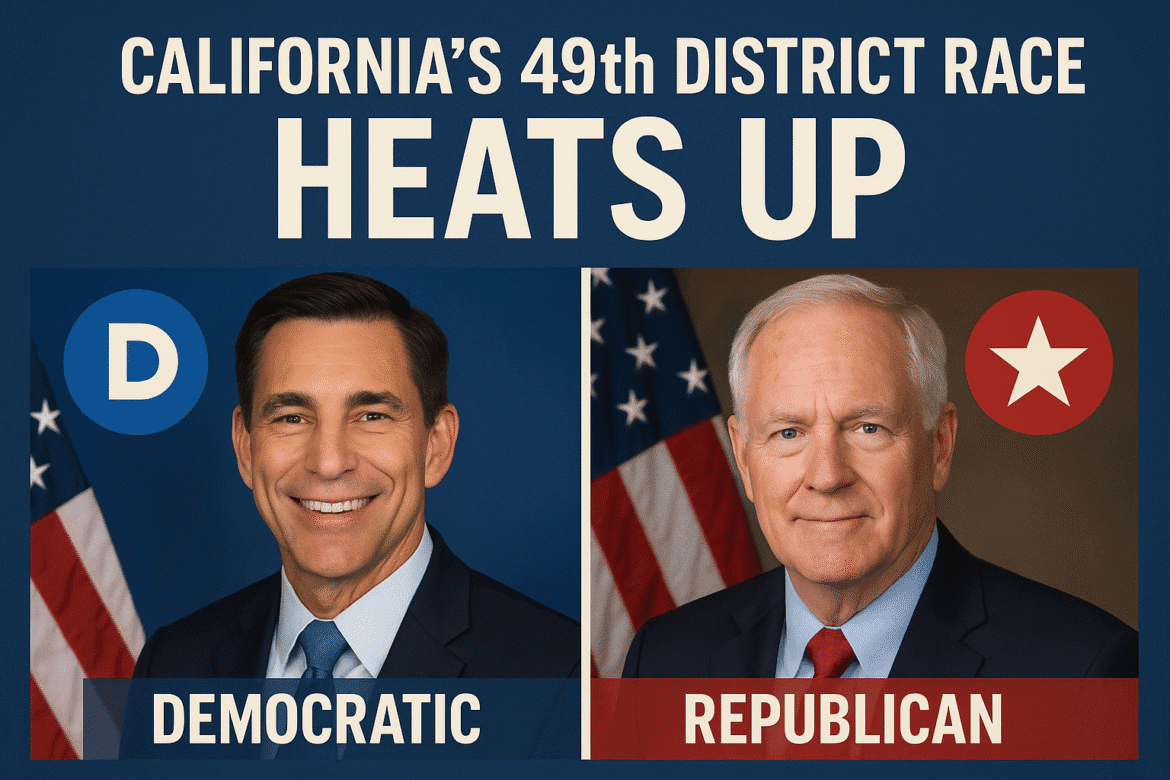The battle for California’s 49th Congressional District is entering a critical phase as the November election draws near. Incumbent Democrat Mike Levin and Republican challenger Matt Gunderson are locked in a tightening race that is drawing attention both statewide and nationally. Recent polling data suggests that the margin between the two candidates has shrunk significantly, signaling a potentially volatile outcome in what was once considered a relatively safe Democratic seat.
Levin, who has represented the district since 2019, is leaning on his legislative track record, with a focus on environmental policy, clean energy investment, and support for veterans. In contrast, Gunderson is pushing a fiscally conservative platform, emphasizing deregulation, tax reduction, and what he characterizes as the need for more efficient federal spending. The differing approaches reflect not just a policy divide but a broader ideological clash playing out across the country.
The Key Issues Defining the Race
Climate change remains a top issue in the 49th District, which stretches along the Southern California coast—a region vulnerable to rising sea levels and worsening wildfires. Levin has been vocal about his work on legislation supporting offshore wind development and increased federal funding for environmental resilience. His campaign has pointed to his role in securing funds for local climate initiatives and infrastructure upgrades.
Veterans’ affairs is another focal point. With Camp Pendleton and a significant veteran population within the district, both candidates have made targeted appeals to military families. Levin touts his bipartisan efforts to improve VA services and mental health care access, while Gunderson has criticized what he views as bureaucratic inefficiencies and promised to streamline support for service members.
Economic concerns are also shaping voter sentiment. Gunderson argues that inflation and government overreach are harming small businesses, pledging to cut red tape and promote free enterprise. Levin counters with proposals aimed at sustainable economic growth, including job creation through green energy investment and federal support for local entrepreneurs.
Campaign Strategies Intensify
As election day nears, both campaigns have shifted into high gear. Field operations are expanding rapidly, particularly for Levin’s team, which has adopted an aggressive ground game. “We’re hitting 2,000 houses a day, seven days a week,” said Gene Larson, a field officer for Levin, underscoring their focus on voter contact and turnout.
Meanwhile, Gunderson’s campaign is increasing its presence at local events and town halls, betting on personal engagement and targeted messaging to sway undecided voters. Advertising efforts, especially through digital and television platforms, are being amplified by both camps, contributing to a media saturation that reflects the high stakes of this contest.
With only weeks left before ballots are counted, California’s 49th District is poised to be one of the state’s most closely watched congressional races. The outcome could hinge on turnout, late-deciding voters, and how effectively each campaign can frame the future of the district—and the nation.

